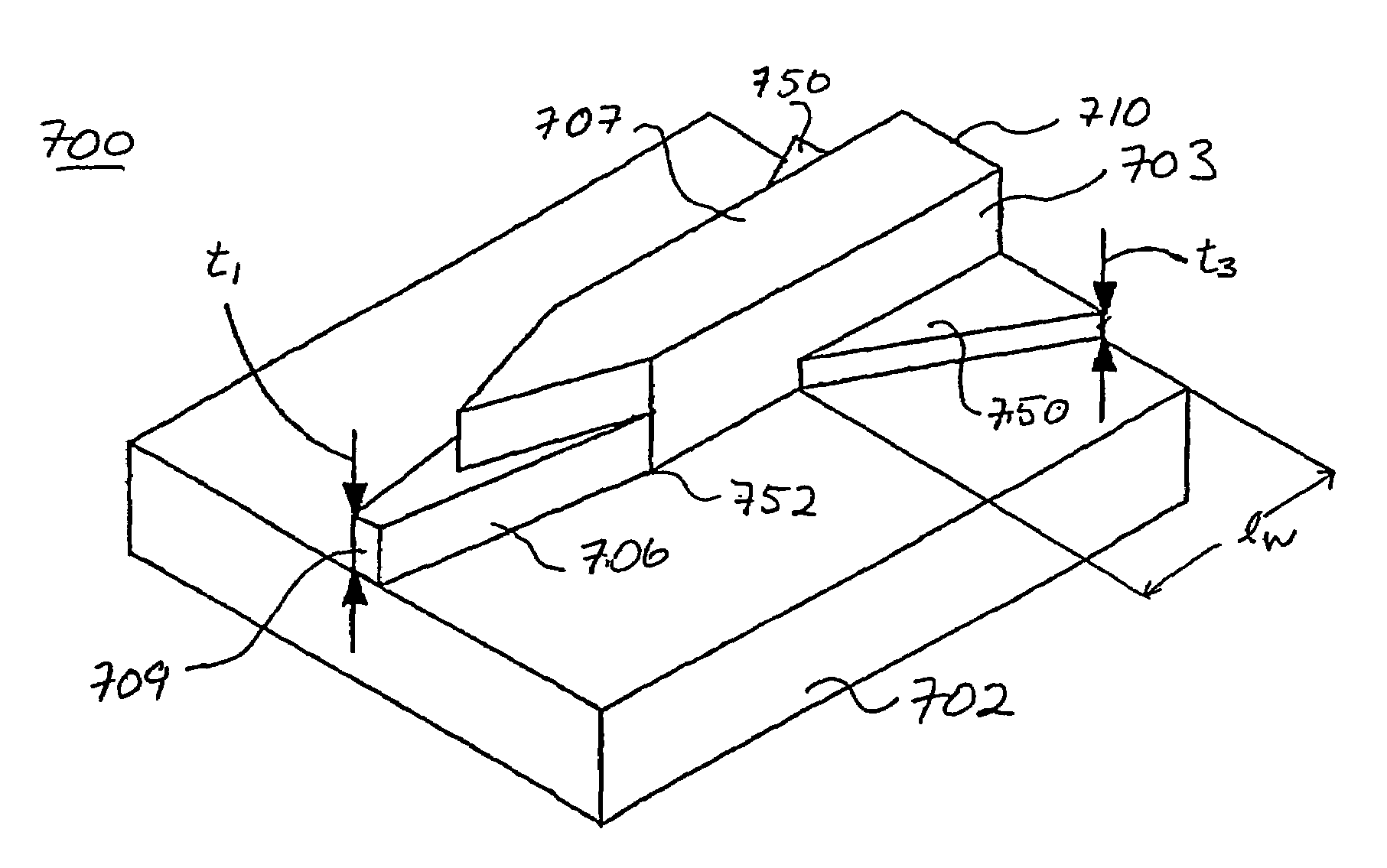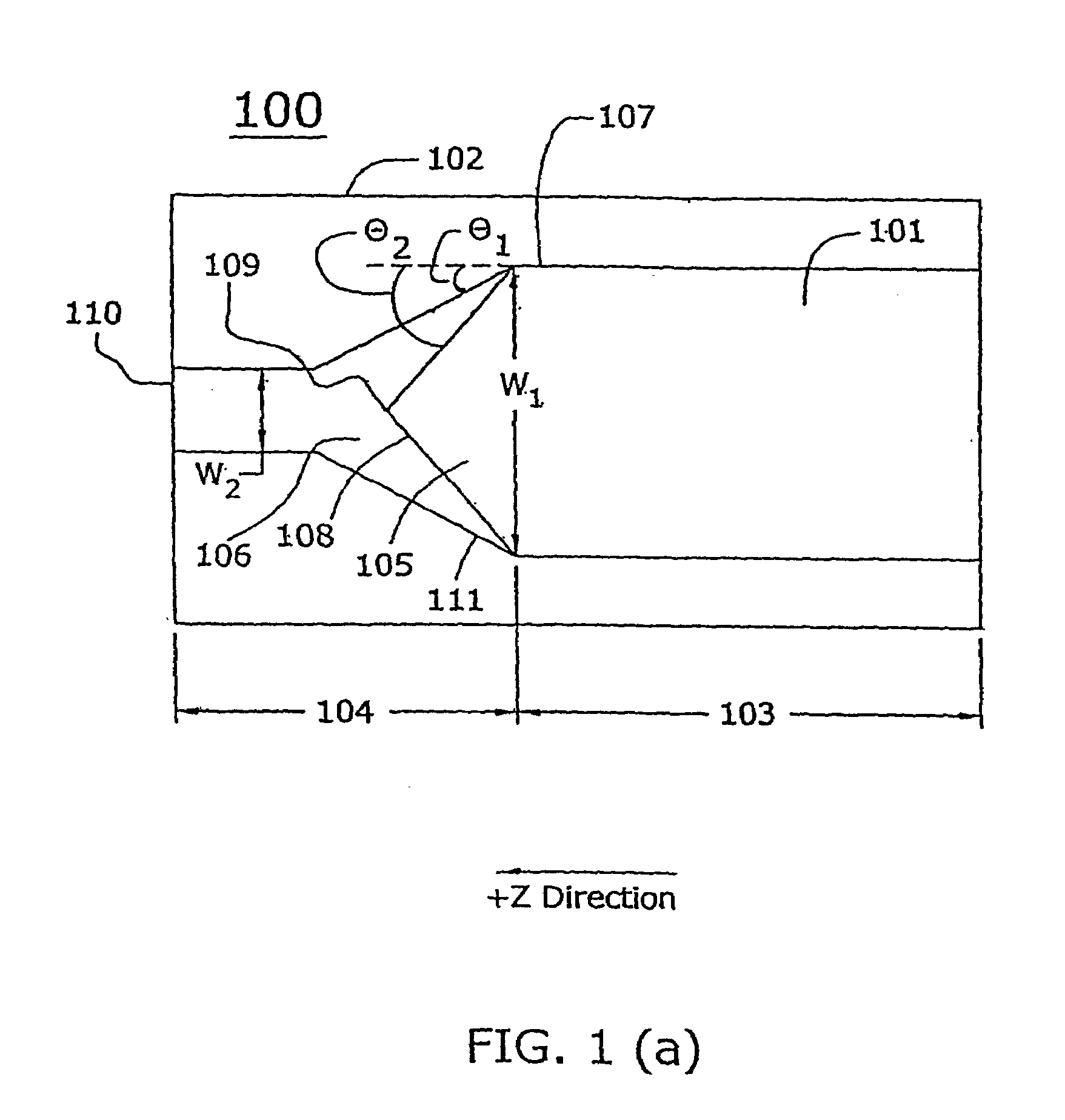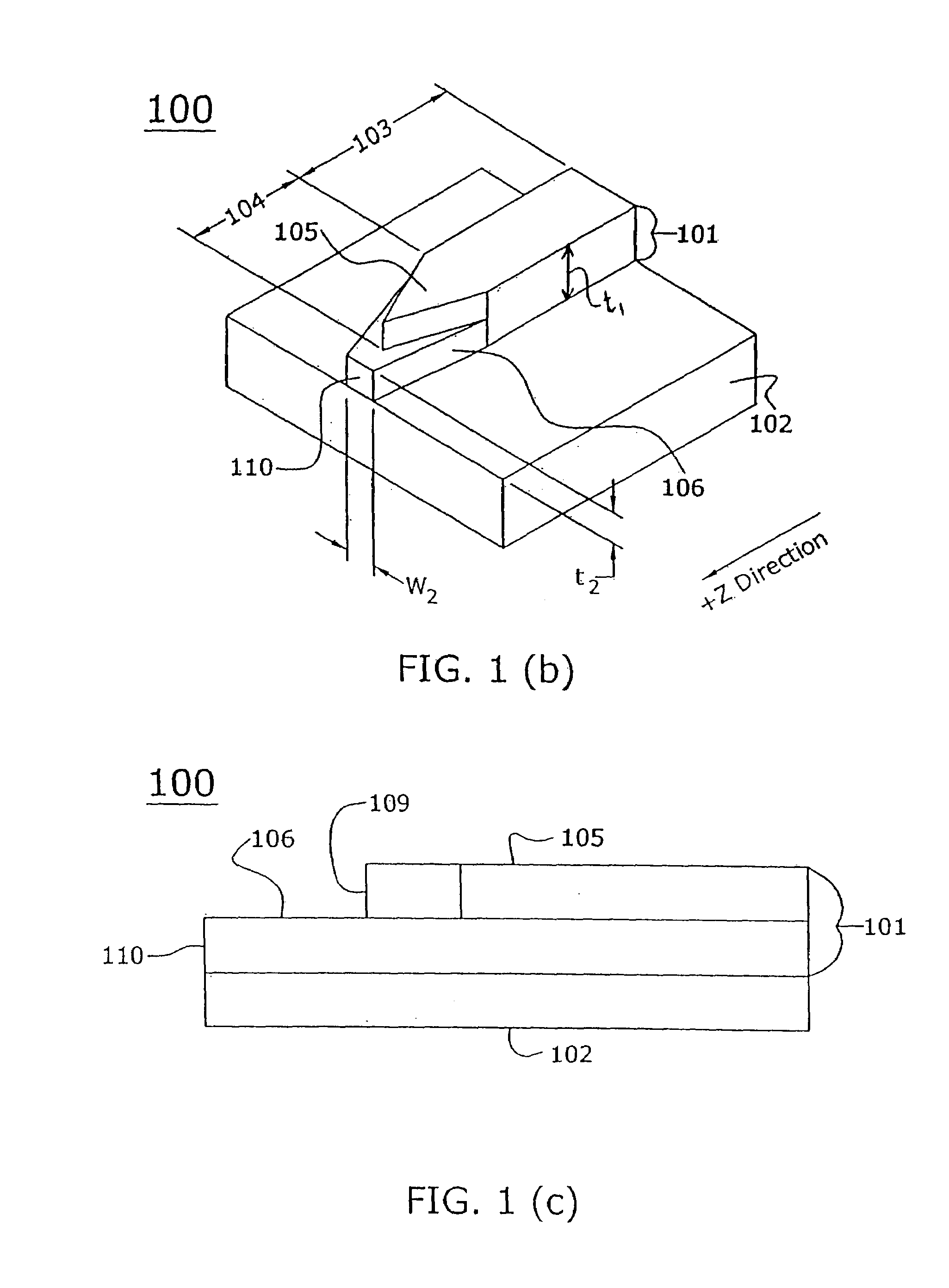Optical waveguide termination with vertical and horizontal mode shaping
a technology of optical waveguides and waveguides, applied in the direction of optical radiation measurement, instruments, spectrometry/spectrophotometry/monochromators, etc., can solve the problems of limited density per wafer in optical integrated circuits, inability to directly coupling high delta-n waveguides to commonly used single-mode optical, and inability to achieve high delta-n waveguides
- Summary
- Abstract
- Description
- Claims
- Application Information
AI Technical Summary
Benefits of technology
Problems solved by technology
Method used
Image
Examples
example i
[0040]Turning to FIG. 2(a), a perspective view of a waveguide 200 according to an exemplary embodiment of the present invention is shown. A lower cladding layer 202 is disposed on a substrate 201. A guiding layer 203 is disposed on lower cladding layer 202. Waveguide 200 has a first region 204 and a second region 205. The guiding layer 203 includes a lower portion 206 and an upper portion 207. An optical mode is coupled from an endface 209 to an optical fiber 208. For the purposes of ease of discussion, an upper cladding layer is not shown in FIG. 2(a). This upper cladding layer would cover the guiding layer 203. The upper cladding layer, guiding layer 203 and lower cladding layer 202 form a waveguide 200 according to an illustrative embodiment of the present invention. The upper cladding layer may have the same index of refraction as the lower cladding layer 202. Alternatively, the upper cladding layer may have a higher (or lower) index of refraction as the lower cladding layer 202...
example ii
[0057]As described above, the upper portion 207 and lower portion 206 of the guiding layer 203 in Example I were substantially symmetric about an axis 210 bisecting the guiding layer 203. In the illustrative embodiments of Example II, the upper portion 407 of the guiding layer 401 may be asymmetric about an axis 413 bisecting the guiding layer 401. The lower portion 402 may be symmetric about the axis 413 bisecting the guiding layer 401. Alternatively, both the upper portion 407 and the lower portion 402 may be asymmetric about an axis 413 bisecting the guiding layer 401. The asymmetry of either the upper portion 407 of the guiding layer 401 alone or of the upper and lower portions 407 of the guiding layer 401 about an axis 413 which bisects the guiding layer 401 may be beneficial from the perspective of manufacturing and fabrication.
[0058]In the illustrative embodiments described in this example, the asymmetry of the taper of either the upper portion 407 or the upper portion 407 an...
example iii
[0069]In the present example, other illustrative embodiments of the present invention are described. These illustrative embodiments may incorporate the principles of symmetry and asymmetry of the guiding layer as described above. Moreover, many of the fabrication techniques described in connection with the illustrative embodiments of Examples I and II may be used.
[0070]FIG. 5 shows a perspective view according to another illustrative embodiment of the present invention. A waveguide 500 includes a lower cladding layer 502. The lower cladding layer 502 may be disposed on a substrate 501. A guiding layer 503 is disposed on the lower cladding layer 502. An upper cladding layer (not shown) may be disposed on the guiding layer 503. In the embodiment shown in FIG. 5, the lower portion 507 of the guiding layer 503 is a diffused guiding layer. In the particular embodiment shown in FIG. 5, the lower portion 507 is illustratively a TiLiNbO3 waveguide. The top portion 506 of waveguide 503 is a ...
PUM
| Property | Measurement | Unit |
|---|---|---|
| angle | aaaaa | aaaaa |
| angle | aaaaa | aaaaa |
| thickness | aaaaa | aaaaa |
Abstract
Description
Claims
Application Information
 Login to View More
Login to View More - R&D
- Intellectual Property
- Life Sciences
- Materials
- Tech Scout
- Unparalleled Data Quality
- Higher Quality Content
- 60% Fewer Hallucinations
Browse by: Latest US Patents, China's latest patents, Technical Efficacy Thesaurus, Application Domain, Technology Topic, Popular Technical Reports.
© 2025 PatSnap. All rights reserved.Legal|Privacy policy|Modern Slavery Act Transparency Statement|Sitemap|About US| Contact US: help@patsnap.com



